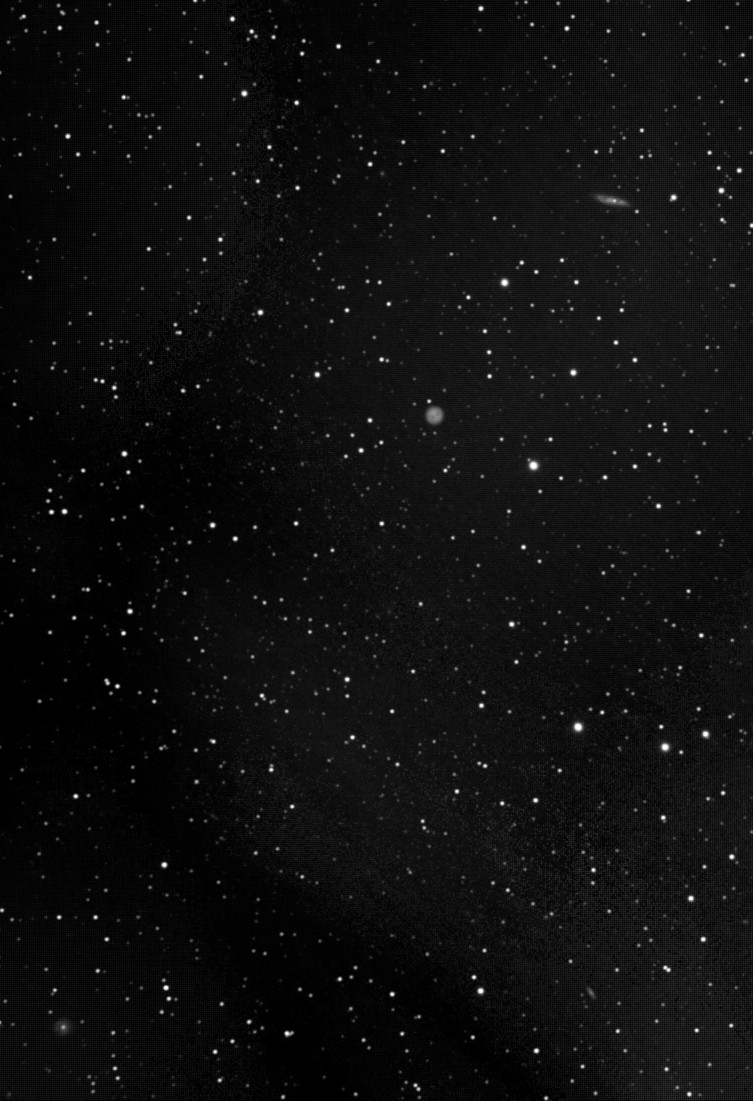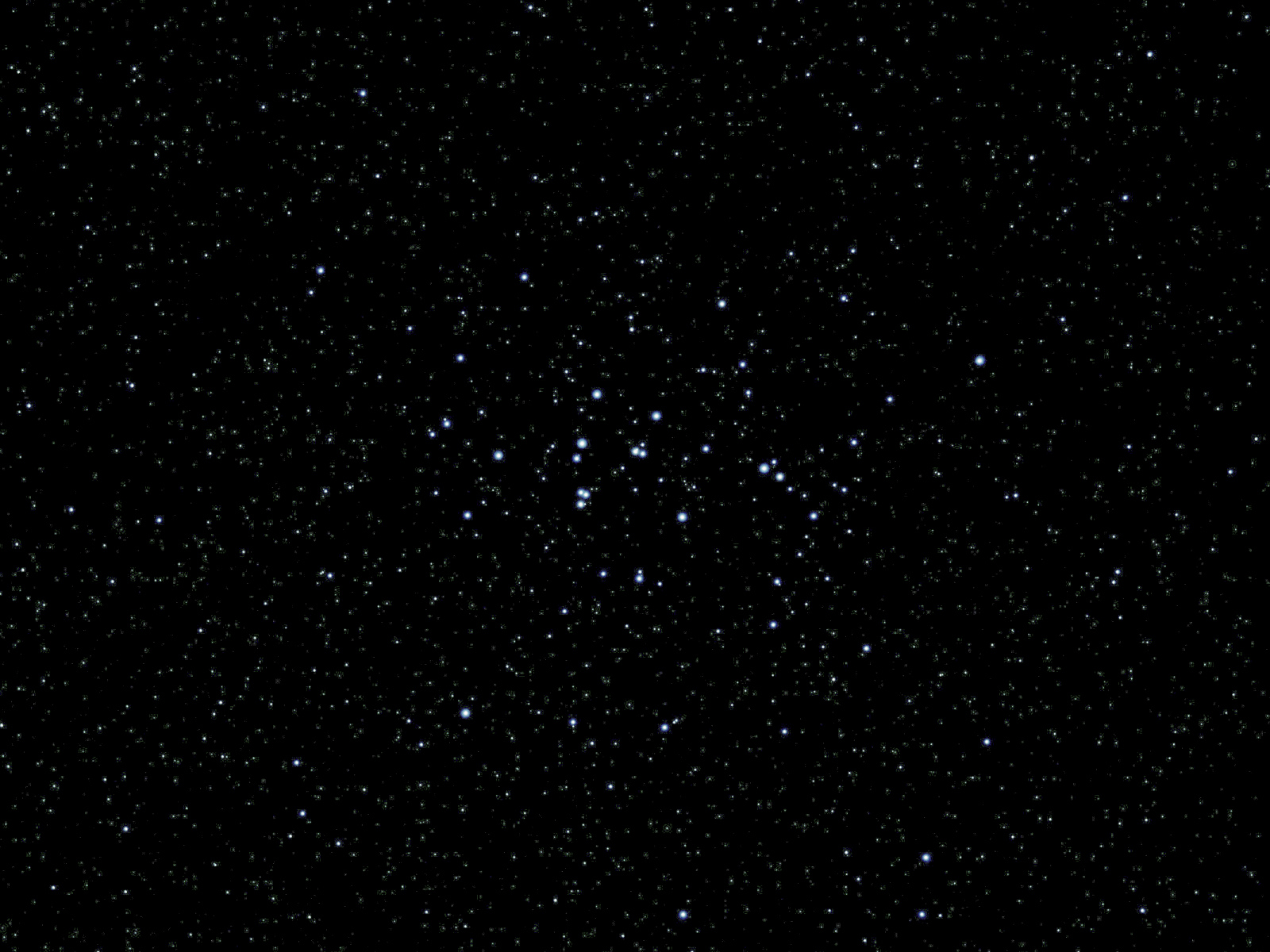
Sadr is at the center of the cross in Cygnus. 600 second single exposure — the sky was very transparent last night.

Sadr is at the center of the cross in Cygnus. 600 second single exposure — the sky was very transparent last night.

On my desktop monitor, the needle of NGC 4565 is quit clear, and if I expand the image I can clearly make out the dark lane across the galaxy. But on other systems, it is just too faint.
Still, pictures like these are a much more accurate representation of what the view is through even a fairly big amateur telescope. These objects are far away and small and dim, and that is part of the appeal.

M97 is upper center right — you can make out the 2 “eyes”; M108 is upper right; NGC 3656 is barely visible in the lower left corner, and NGC 3549 is barely visible in the lower right. About the limit of the conditions, the equipment, and the image processing skill.
Here I try to bring out the noise that I worked so hard to eliminate in the first photo. As a photo, I think this one is better…

Something completely different — just stars.
I have a new GEM — German Equatorial Mount — and I have to learn about it. It replaces a Sky Watcher camera mount that was overwhelmed by the additional weight of a small refractor telescope, and couldn’t track properly. This new mount is much steadier; the small background stars above are very crisp, though I’m not happy with the image processing — if you pixel-peep, you will see what I mean.

This is a stack of over 70-some 30 second exposures of the Whirlpool galaxy. While there is significant detail, the dynamic range is pathetic. I think this is because 1) the individual exposures are short, and 2) there was a nearly full moon.
However, I’ve seen beautiful photos from stacks of hundreds of 3 second exposures, and the cumulative time from my frames is larger. So undoubtedly my processing technique is faulty. OTOH, I’m not sure of the magnitude of the effect from the moon. Further investigation is required…